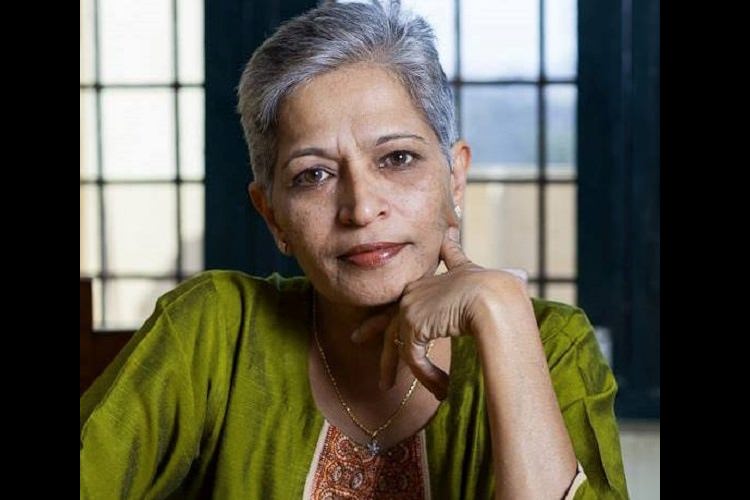
Gauri Lankesh
Recently, India has experienced a spike in violence against journalists, women and critics of the increasingly dominant religious right. On Tuesday, September 5, that violence claimed the life of feminist activist and journalist Gauri Lankesh as she entered her home, in Bengaluru, in the south of India. Protests exploded across India, partly because of the murder of Gauri Lankesh herself and partly because of its familiarity. Men on motorcycles drove past and fired seven shots, three of which hit and killed Gauri Lankesh. That was exactly the fate of three other prominent so-called secularists: Narendra Dabholkar in 2013, Govind Pansare and M.M. Kalburgi, both in 2015. What made Gauri Lankesh so dangerous?
Gauri Lankesh was 55 years old, the editor and publisher of Gauri Lankesh Patrike, a Kannada-language weekly paper which served, and roused, the local populations across the state of Karnataka. A “feisty leftist” and “staunch and vocal critic of the ruling BJP government and of Hindu right-wing extremism”, Gauri Lankesh “raged like a fire”. “Known for her vocal stand against India’s growing right-wing ideology, communal politics and majoritarian policies”, Gauri Lankesh was “one of India’s most outspoken journalists.” She was “fearless” and “fearfully courageous.” Gauri Lankesh was an “imperfectly perfect feminist icon – courageous, independent, contradictory, inspiring … to always do what is right; an inspiration in otherwise tiring, scary times.”
Gauri Lankesh railed against the rise of fascist, communalist, right wing religious zealots as she insisted on the centrality of building inter-caste and inter-faith unions rather than walls. In “Highest Good and Lowest Lives”, Gauri Lankesh described the lives of those who clean sewers: “According to estimates, there are about one million manual scavengers in India. Needless to say most of them – if not all – are ‘untouchables’. They live and work in shit for a measly monthly pay of about three or four thousand rupees. Because of their jobs, they suffer from skin and organ infections. In order to overcome the horror of their ‘profession’, they find succour in alcoholism. They cannot form a union to fight for their rights since these days most city corporations or municipalities have outsourced scavenging jobs to private contractors.”
The feudalism of caste embraces the neoliberalism of outsourcing, and the result is 20,000 “scavengers” die every year in the manholes of India. And the response? Silence. Where is the uproar? Where is the concern? Why does no one care? Gauri Lankesh made her readers ask those questions and then act in response.
In writing about the rising tide of violence against women, in her home town of Bengaluru, or the long history of attacks on freedom of the press, in her home state of Karnataka, Gauri Lankesh pointed to the intersection of modernity’s toxic masculinity of the Big Man at Home and the colonial legacy of the Big Man in the State House, and in each instance, her verdict was straightforward: “This … should not even exist in a democracy.”
The murder of Gauri Lankesh was not surprising. She had received death threats every day, and she persisted. She was attacked by the State, and she persisted. In a world built increasingly on rising violence against women, journalists, and critics, martyrdom has become our daily bread. Gauri Lankesh was a woman who chose to write, speak, dissent, analyze, research, and believe in democracy. Gauri Lankesh chose to work locally and regionally, chose to write primarily in Kannada rather than English, and chose to believe that democracy comes up from the sewers and is a song sung by the chorus of little voices: “Little voices, like that of a Gauri Lankesh, will not be allowed to defy. That is why she had to be killed.” This should not even exist in a democracy.

Protest in Karnataka
(Photo Credit 1: FeminismInIndia / Facebook) (Photo Credit 2: The Wire / PTI)